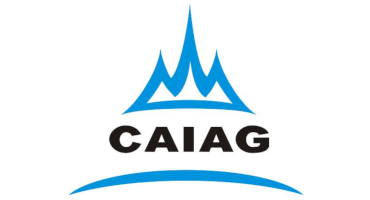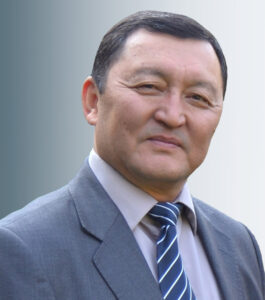CAIAG
CENTRAL-ASIAN INSTITUTE FOR APPLIED GEOSCIENCES
Central-Asian Institute for Applied Geosciences, Timur Frunze Rd.73/2, 720027 Bishkek, Kyrgyz Republic

CAIAG is a non-govermental organization, which was established according agreemnet between the Government of Kyrgyz Republic and the German Research Center for Geosciences, Podstam, Germany in 2002. The main mission of the CAIAG are study based of the environmantal changes in Kyrgyzstan and Central Asian region. In the field of interest of the Istitute is investigations related to monitoring of geodynamics, geohazards processes; forescat hazard risks for local communities; climate dynamics and its role for water resource distribution in the Central Asian region; organization of monitoring systems for environmental processes and data managment; increasing capacity for scientific cooperation with other researcher organizations.
CAIAG is involved into all packages of the project. In the Work Package 1 (WP1), the institute will participate in the establishment of the hydro-meteorological stations in the study area and modernisation of manitoring network systems from glacier zone down to lowland along the rivers, validation of mearured datas and organization of capacity building for the endusers; to analyze meteorological, glaciological and hydrological components for modeling (WP2); to collect all necessary materials for the model, and involve the process of modeling for the water footprint in the study area (WP3); analyzing data sovereiginty and localizations and involve to build the cloud architecture based on previous experiences (WP4); involveving to build end-user/beneficiaries mapping and make deferent researcehs for the DDS W(WP5); to involve analyze a transparent water sharing regime based on the notion of benefits sharing between water allocations, analize water usege platforms, tools, models, codeveloped of integrated cross-border policies (WP6); to involvely actively building to Dissemination and Communication Plan and coordinating with other projects, partners and scientific organisations (WP7); and coordination and managment with the other partners to reach the project goal successifully (WP8).

Certainly, participating in the We-Act project will be very important for me and the CAIAG scientific team, because study the water resources distribution within the river sub-basins and water allocations in transboundary river usages is one of the most priority topic of the CAIAG scientific work. Though some targets of the project are very coincided with our institute's scientific purposes and technical skills, participants will get a lot of new knowledge and skills. For example, during the project CAIAG will be involved actively to modernize the hydro-meteorological stations in Naryn and Kara-Darya river basins and data from those stations will be important for scientific porpoises of modeling river flow regime and water resources distribution under ongoing climate change. Furthermore, the institute is highly interested to analyze current water allocations policies and build water usage transparency between upper areas to lowlands. Moreover, CAIAG's experts will gain their knowledge in building the data clouds. Our institute is creating its own data storage system during almost 20 years and maintain its system by using modern technologies. So, the project cloud system will allow to get some additional information for our Institute team.






